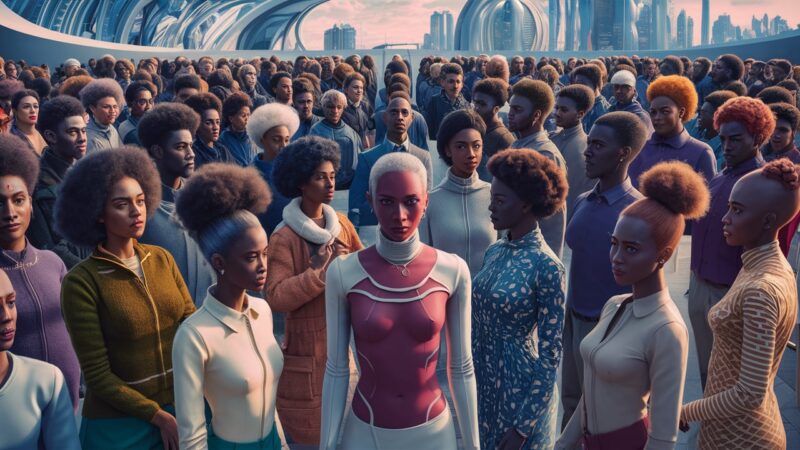In the ever-evolving landscape of online communities, a new phenomenon has emerged that is sparking both curiosity and concern – AI-generated persons. These digital entities, created by artificial intelligence, are entering virtual spaces and interacting with real users in ways previously unseen.
From chatbots providing customer service to virtual influencers racking up followers on social media, the impact of these AI-generated persons is undeniable. As they blur the lines between human and machine, questions arise about the authenticity of online interactions and the influence of these digital beings on the dynamics of virtual communities.
In this article, we delve into how AI-generated persons are shaping online spaces and the implications they hold for the future of digital communication.
1. Introduction to AI-Generated Persons in Online Communities

The integration of AI-generated persons in online communities is revolutionizing the way we interact and engage with one another in the digital sphere. These virtual entities, created through advanced artificial intelligence technology, are becoming increasingly prevalent in various online platforms, from social media networks to discussion forums.
While the concept of AI-generated persons may seem futuristic and perhaps even a bit unsettling to some, their impact on online communities is undeniable. These virtual beings are designed to mimic human behavior and communication, leading to interactions that are at times indistinguishable from those with real individuals.
As technology continues to progress, the presence of AI-generated persons in online communities is only expected to grow, raising questions about the implications for social dynamics and the future of digital communication.
2. The Influence of AI-Generated Persons on User Interaction

The Influence of AI-Generated Persons on User Interaction is a topic that has been gaining significant attention in online communities. As AI technology continues to advance, the impact of AI-generated persons on user interaction cannot be understated.
These virtual entities, created using sophisticated algorithms, have the ability to engage with users in a way that is increasingly indistinguishable from human interaction. Their presence in online communities has sparked discussions about the ethical implications of using AI-generated persons in social settings.
While they have the potential to enhance user engagement and provide valuable insights, questions remain about how to navigate the complexities of these interactions and ensure that users are aware of the presence of AI-generated personas.
3. Ethical Considerations Surrounding AI-Generated Persons in Online Communities
As AI-generated persons become more prevalent in online communities, ethical considerations surrounding their presence are of utmost importance. While these virtual beings can enhance user experience and provide valuable insights, there are concerns about their impact on the authenticity of human interactions.
Questions around transparency, consent, and data privacy arise when AI-generated persons are used to manipulate or deceive online users. Additionally, the potential for bias and discrimination in the algorithms behind these virtual entities raises ethical red flags.
As online communities continue to evolve with AI technology, it is crucial for stakeholders to address these ethical considerations to ensure a safe and inclusive digital environment for all.
Conclusion
In conclusion, the emergence of AI-generated persons is undeniably impacting online communities in various ways. These virtual entities, such as this person does not exist, are reshaping interactions, content creation, and even identities in the digital realm. As technology continues to advance, it is important for users to remain aware of the presence of AI-generated persons and to critically assess the authenticity of information and individuals they encounter online.
Ultimately, the integration of AI into online communities offers both opportunities and challenges, prompting us to reflect on the evolving dynamics of human-machine interactions in the digital age.


